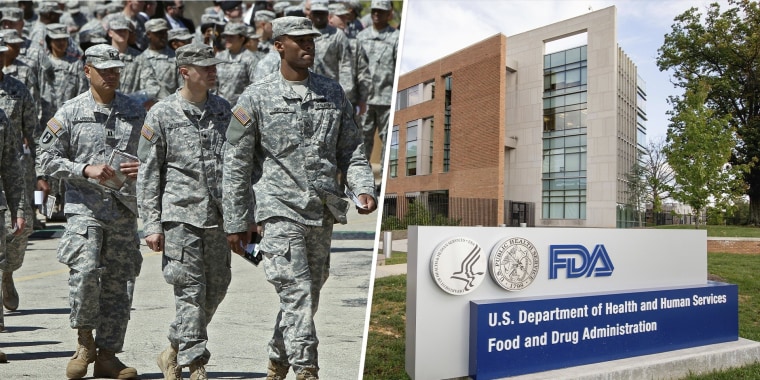Video How the government shutdown is already impacting the economy – ABC News – Breaking News, Latest News and Videos

Report on the Impact of a Potential U.S. Government Shutdown on Sustainable Development Goals
Introduction
A potential United States government shutdown poses significant challenges to the advancement of several Sustainable Development Goals (SDGs), particularly those related to education, cultural preservation, environmental conservation, and public well-being. This report analyzes the operational status of key public institutions and services in the event of a shutdown, with a focus on its implications for SDG targets.
SDG 4: Quality Education & SDG 11: Sustainable Cities and Communities
A shutdown directly threatens public access to cultural and educational institutions, undermining efforts to safeguard cultural heritage and provide inclusive and equitable quality education for all.
Status of Cultural and Educational Institutions
- Smithsonian Institution: The Smithsonian, which includes 21 museums and the National Zoo, will remain open until at least October 6, 2025. However, as it receives 62% of its funding from the federal government, a prolonged shutdown would force its closure. This action would impede progress on SDG 4 (Quality Education) by limiting access to lifelong learning opportunities and contravene SDG 11.4, which aims to protect and safeguard the world’s cultural heritage.
- Unaffected Institutions: Museums and sites that do not rely on federal funding will continue to operate, thereby maintaining some level of public access to cultural resources. These include:
- The National Building Museum
- The National Museum of Women in the Arts
- The Phillips Collection
- Public Spaces: Outdoor attractions, such as the monuments on the National Mall, are expected to remain open and accessible to the public.
SDG 15: Life on Land
The shutdown impacts conservation efforts and public engagement with biodiversity, affecting progress toward protecting terrestrial ecosystems.
National Zoo Operations and Conservation Outreach
- Public Closure: The National Zoo will close to the public during a government shutdown.
- Animal Welfare: Officials have assured that all animals will continue to receive full care from essential staff, aligning with the ethical responsibilities of SDG 15.
- Reduced Public Engagement: The popular animal webcam streams, a key tool for global education and engagement on wildlife conservation, will not be operational. This suspension limits the Zoo’s capacity to raise awareness about biodiversity and conservation, a crucial component of achieving the targets within SDG 15.
SDG 3: Good Health and Well-being & SDG 16: Peace, Justice and Strong Institutions
While core public health and safety services are maintained, a shutdown reflects institutional instability and affects the full operational capacity of public bodies.
Continuity of Essential Services
- Health and Emergency Services: The continued operation of 911 dispatch, hospitals, medical centers, and Veterans Affairs facilities ensures that progress toward SDG 3 (Good Health and Well-being) is not compromised.
- National Park Safety: Although services at U.S. national parks may be scaled back with fewer staff and closed visitor centers, the retention of emergency personnel demonstrates a commitment to public safety. This measure ensures that the fundamental responsibility of institutions to protect citizens, a principle of SDG 16, is upheld.
Analysis of SDGs, Targets, and Indicators
1. Which SDGs are addressed or connected to the issues highlighted in the article?
-
SDG 3: Good Health and Well-being
- The article directly addresses public health and safety by confirming that essential services will remain operational. It mentions that “Emergency services such as 911 dispatch will continue to operate as normal, and hospitals and medical centres remain open throughout the country,” ensuring the well-being of citizens is not compromised in this area during the shutdown.
-
SDG 4: Quality Education
- The potential closure of the Smithsonian Institution’s 21 museums and the National Zoo impacts inclusive and equitable access to informal education and cultural learning opportunities. The article notes that “admission to its museums is free,” highlighting that a shutdown would disproportionately affect individuals and families who rely on these free resources for educational enrichment.
-
SDG 8: Decent Work and Economic Growth
- The article touches upon the economic impact on tourism, a key sector for growth. The closure of major attractions like the Smithsonian museums and the scaling back of services at national parks, including “fewer staff,” directly affects the tourism industry and the jobs it supports.
-
SDG 11: Sustainable Cities and Communities
- This goal is relevant through its focus on protecting cultural and natural heritage. The article discusses the vulnerability of the Smithsonian museums, the National Zoo, and national parks, which are significant cultural and natural heritage sites. The shutdown threatens public access to and the full operation of these institutions, which are integral to the cultural fabric of the community.
-
SDG 15: Life on Land
- The article connects to this goal through its discussion of the National Zoo and national parks, which are crucial for the conservation of biodiversity. While public access is halted, the article provides assurance that “the animals will still receive full care,” indicating that core conservation responsibilities are being maintained. However, the shutdown of “popular animal webcam streams” reduces public engagement and education on wildlife conservation.
-
SDG 16: Peace, Justice and Strong Institutions
- The core issue of the article, a government shutdown, is a direct reflection on the effectiveness and stability of public institutions. The article illustrates how the failure of a primary government institution to remain funded has a cascading effect on other public institutions, such as the Smithsonian, which “receives 62% of funding from the federal government.” This highlights a weakness in institutional resilience.
2. What specific targets under those SDGs can be identified based on the article’s content?
-
Target 3.d: Strengthen the capacity of all countries, in particular developing countries, for early warning, risk reduction and management of national and global health risks.
- The article confirms that despite the shutdown, the country’s capacity to manage health risks is maintained, as “Emergency services such as 911 dispatch will continue to operate as normal, and hospitals and medical centres remain open.”
-
Target 4.7: By 2030, ensure that all learners acquire the knowledge and skills needed to promote sustainable development… and appreciation of cultural diversity and culture’s contribution to sustainable development.
- The closure of the Smithsonian museums, which offer free admission, directly hinders the public’s ability to access cultural and educational resources that contribute to this target.
-
Target 8.9: By 2030, devise and implement policies to promote sustainable tourism that creates jobs and promotes local culture and products.
- The shutdown of major cultural institutions and reduced services at national parks acts counter to the promotion of sustainable tourism, negatively impacting the local economy and jobs dependent on visitors.
-
Target 11.4: Strengthen efforts to protect and safeguard the world’s cultural and natural heritage.
- The article highlights the dependence of significant cultural heritage sites (Smithsonian museums) and natural heritage sites (National Zoo, national parks) on federal funding. The shutdown demonstrates a disruption in the effort to safeguard these assets by making them inaccessible and reducing their operational capacity.
-
Target 15.5: Take urgent and significant action to reduce the degradation of natural habitats, halt the loss of biodiversity and, by 2020, protect and prevent the extinction of threatened species.
- The assurance that animals at the National Zoo “will still receive full care” during the shutdown directly relates to the ongoing effort to protect species, even when other public-facing operations cease.
-
Target 16.6: Develop effective, accountable and transparent institutions at all levels.
- The government shutdown itself is an example of an institutional failure. The article’s focus on the consequences of the shutdown on federally funded bodies like the Smithsonian illustrates a lack of institutional effectiveness and reliability.
3. Are there any indicators mentioned or implied in the article that can be used to measure progress towards the identified targets?
-
Implied Indicator for Target 3.d: Operational status of emergency health services.
- The article provides a clear measure: emergency services, hospitals, and medical centers “will continue to operate as normal” or “remain open,” indicating that this capacity is not compromised.
-
Implied Indicator for Target 4.7: Public access to free cultural and educational institutions.
- The article implies this can be measured by the status of the Smithsonian museums. The statement that they “must close to the public” serves as a negative indicator for this target.
-
Implied Indicator for Target 8.9: Operational status and staffing levels of major tourist attractions.
- The article points to the closure of museums and “fewer staff” at national parks as direct, measurable impacts on the infrastructure that supports the tourism economy.
-
Implied Indicator for Target 11.4: Continuity of funding and operations for cultural and natural heritage sites.
- The article provides a specific data point: the Smithsonian “receives 62% of funding from the federal government.” The reliance on this funding and the subsequent closure during a shutdown serve as an indicator of the vulnerability of these heritage sites.
-
Implied Indicator for Target 15.5: Continuity of essential care for animals in conservation centers.
- The statement that “the animals will still receive full care” is a qualitative indicator that core conservation activities are being maintained despite the shutdown.
-
Implied Indicator for Target 16.6: Frequency and duration of government shutdowns affecting public services.
- The entire article is predicated on the event of a “government shutdown,” which itself is an indicator of institutional instability and ineffectiveness.
4. Summary Table of SDGs, Targets, and Indicators
| SDGs | Targets | Indicators (Mentioned or Implied in the Article) |
|---|---|---|
| SDG 3: Good Health and Well-being | 3.d: Strengthen capacity for management of national health risks. | The operational status of emergency services (911) and hospitals, which “remain open.” |
| SDG 4: Quality Education | 4.7: Ensure all learners acquire knowledge for sustainable development and appreciation of cultural diversity. | Public access to free cultural institutions like the Smithsonian museums, which “must close to the public.” |
| SDG 8: Decent Work and Economic Growth | 8.9: Promote sustainable tourism that creates jobs. | The operational status of tourist attractions and the mention of “fewer staff” at national parks. |
| SDG 11: Sustainable Cities and Communities | 11.4: Strengthen efforts to protect and safeguard the world’s cultural and natural heritage. | The continuity of operations at heritage sites, threatened by the fact that the Smithsonian receives “62% of funding from the federal government.” |
| SDG 15: Life on Land | 15.5: Take urgent action to halt the loss of biodiversity and protect threatened species. | The continuity of animal welfare, confirmed by the statement that “the animals will still receive full care.” |
| SDG 16: Peace, Justice and Strong Institutions | 16.6: Develop effective, accountable and transparent institutions at all levels. | The occurrence of a “government shutdown,” which disrupts the functioning of public institutions. |
Source: bbc.com

What is Your Reaction?
 Like
0
Like
0
 Dislike
0
Dislike
0
 Love
0
Love
0
 Funny
0
Funny
0
 Angry
0
Angry
0
 Sad
0
Sad
0
 Wow
0
Wow
0














































.jpg.webp?itok=0ZsAnae9#)







:focal(1500,1000)/https://media.globalcitizen.org/a6/9a/a69a4720-d8a1-4715-b596-18738d03c05c/rotary_polio_hero_image.jpg?#)

/countries/sri-lanka/photo-credit---dmc-sri-lanka.tmb-1200v.jpg?sfvrsn=dc298bcc_1#)




















